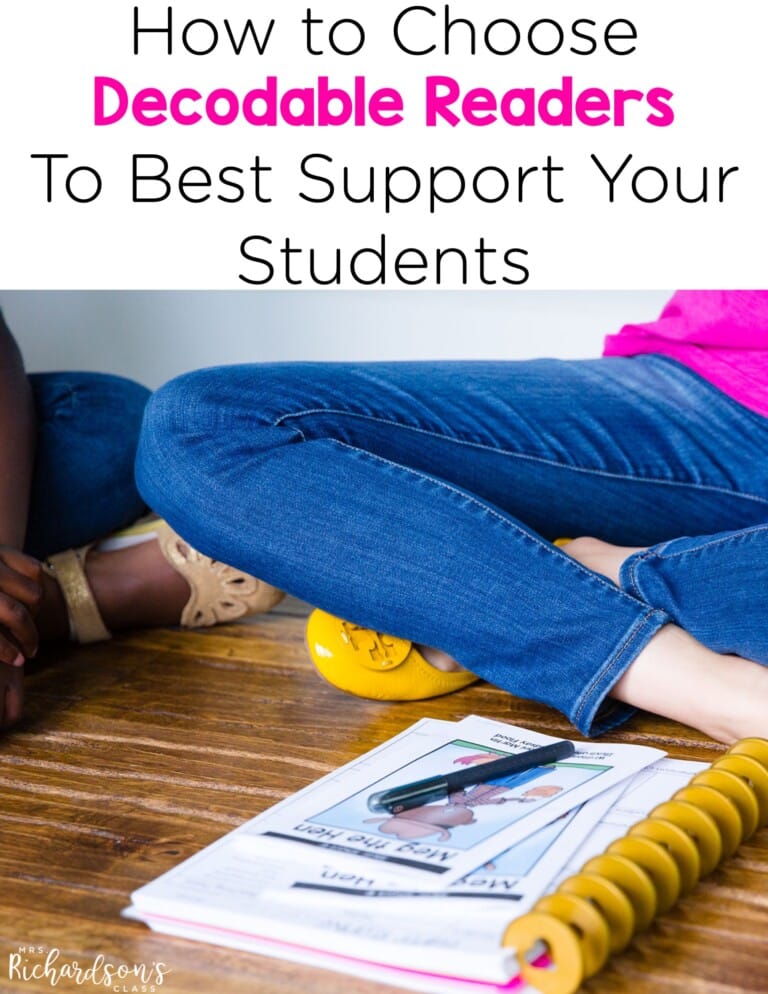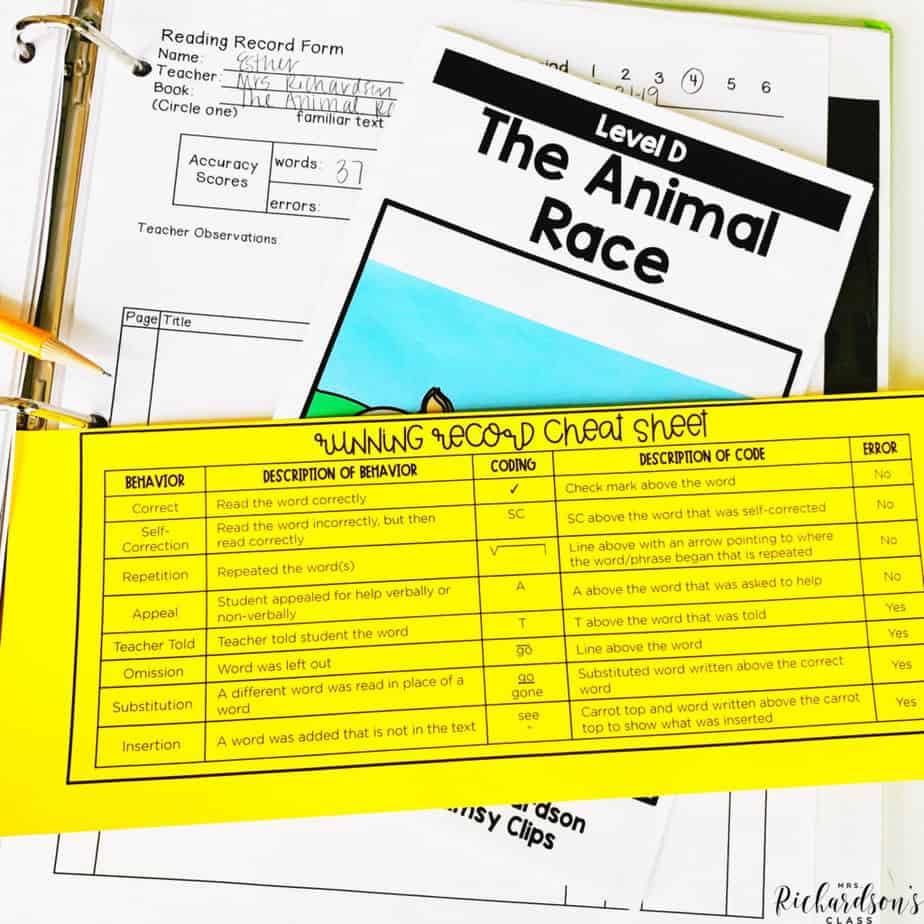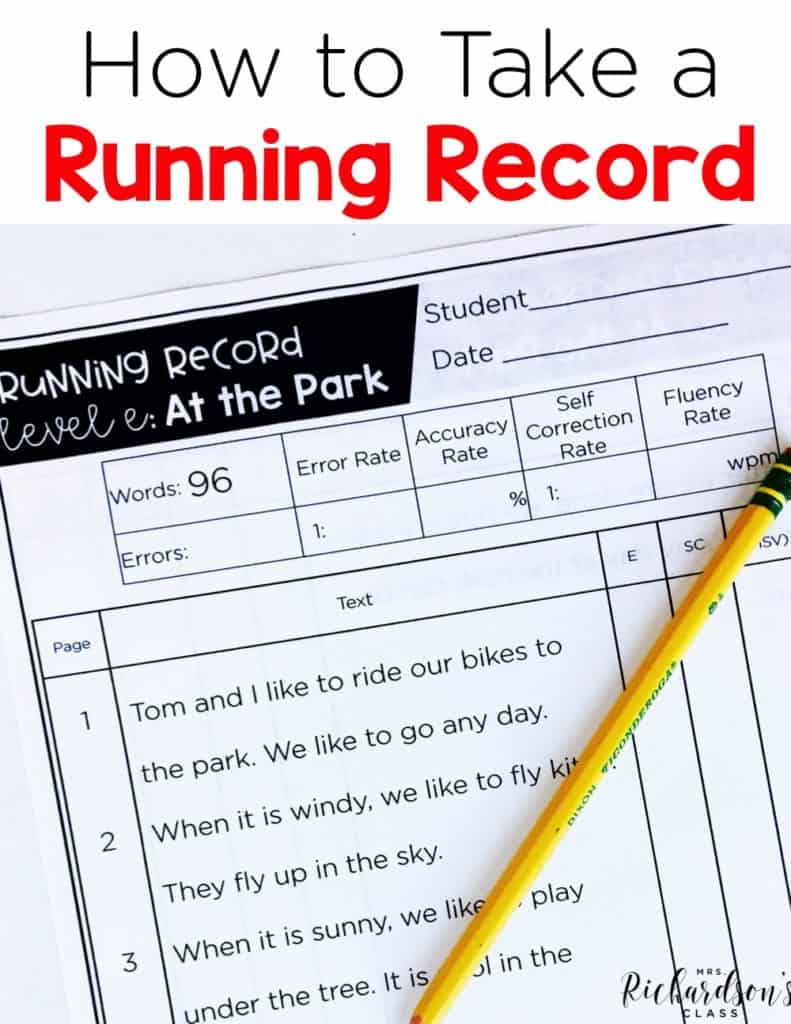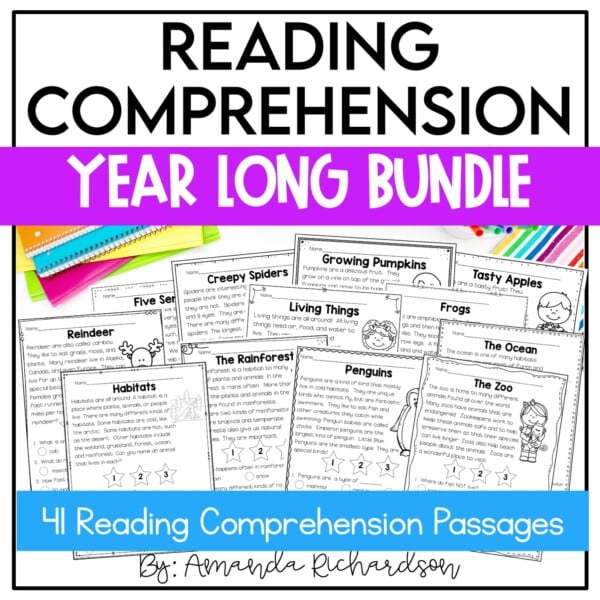

When it comes to guided reading, there are several components of a lesson. The students have jobs and you, the teacher, have jobs, too. One of those is to take a running record.
A running record is a page of notes that you take as you listen to a reader read a book. Simply put, this is the assessment component of the lesson. Some running record forms have the text written on them to match exactly what the student is reading.
Other running record forms are blank. This is my favorite because I can keep several copies in my guided reading binder ready to use at any time and with any book!
When you take a running record, you will listen to the reader and then mark, or code, on your page. Sounds a little confusing, but it really is simple! Let’s break down the coding!

You can grab this FREE Running Record Cheat Sheet HERE by signing up for my email list!
I think it’s important to note that at the end of the day, this is data that YOU are looking and digging into. You will learn your own style and will have something that works best for you. I know for me, as time went on, I found that I liked to underline the word or words that were repeated instead of marking them on top with a line and arrow. You will notice that above in my running record I took.
After the reader has read the book, you will check for comprehension. This is the time for you to ask for a retell, ask specific comprehension questions, and check for understanding. You will make note of this in the empty space on the running record form.
Running Record Calculations
Now that you have a page full of useful information, you will calculate the accuracy and fluency rates.
According to Fountas and Pinnell, you are looking for that sweet spot that allows you to coach your readers—90-94% accuracy. This is for reading levels A-J.
For levels K-N, you are looking for 95-97% accuracy. This is their instructional level.
Anything above is too easy and is considered their independent level. Anything below is too hard and is considered frustrational.
There you have it! You now have a page FILLED with helpful information about your reader! You are able to identify teaching points from here, make sure they are reading on the best level for teaching, and they are growing in their reading knowledge!

pin it

Want to use the latest research to boost your readers during small groups? This FREE guide is packed with engaging ideas to help them grow!

I’m a K-1 teacher who is passionate about making lessons your students love and that are easy to implement for teachers. Helping teachers like you navigate their way through their literacy block brings me great joy. I am a lifelong learner who loves staying on top of current literacy learning and practices. Here, you’ll find the tools you need to move your K-2 students forward!



| Cookie | Duration | Description |
|---|---|---|
| cookielawinfo-checkbox-analytics | 11 months | This cookie is set by GDPR Cookie Consent plugin. The cookie is used to store the user consent for the cookies in the category "Analytics". |
| cookielawinfo-checkbox-functional | 11 months | The cookie is set by GDPR cookie consent to record the user consent for the cookies in the category "Functional". |
| cookielawinfo-checkbox-necessary | 11 months | This cookie is set by GDPR Cookie Consent plugin. The cookies is used to store the user consent for the cookies in the category "Necessary". |
| cookielawinfo-checkbox-others | 11 months | This cookie is set by GDPR Cookie Consent plugin. The cookie is used to store the user consent for the cookies in the category "Other. |
| cookielawinfo-checkbox-performance | 11 months | This cookie is set by GDPR Cookie Consent plugin. The cookie is used to store the user consent for the cookies in the category "Performance". |
| viewed_cookie_policy | 11 months | The cookie is set by the GDPR Cookie Consent plugin and is used to store whether or not user has consented to the use of cookies. It does not store any personal data. |
13 Responses
—
Always looking for a better way to assess students with tools that provide valuable and meaningful data.
Is the blank running record available? Thanks!
Hi! Yes! It is a part of my guided reading binder. 🙂 You can find it here. https://www.teacherspayteachers.com/Product/Guided-Reading-Binder-EDITABLE-300964
Where can we get the blank running record sheets? 🙂
Hi! It is a part of my guided reading binder. 🙂 You can find it here. https://www.teacherspayteachers.com/Product/Guided-Reading-Binder-EDITABLE-300964